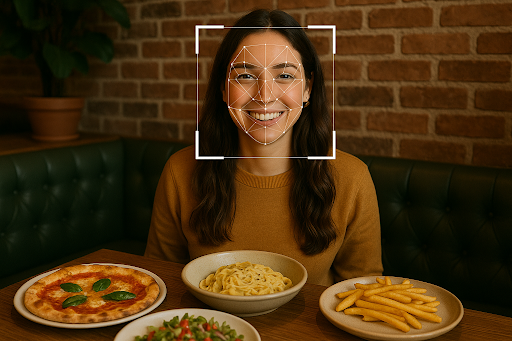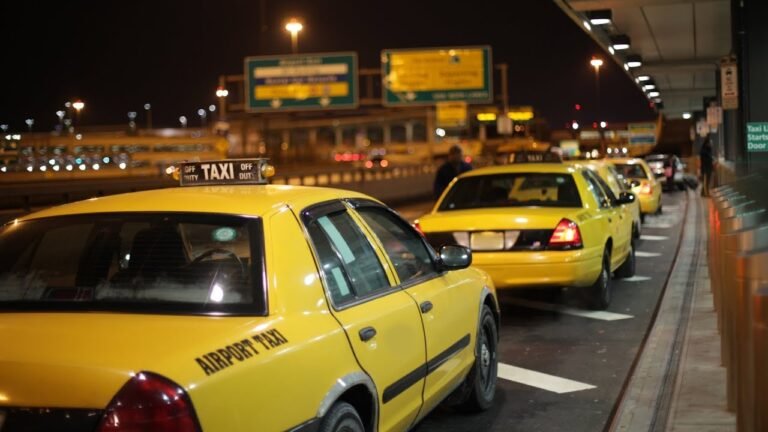When you walk into a restaurant today, you might be greeted with a warm smile—but tomorrow, that smile might belong to a camera that already knows your favorite meal. Welcome to the world of facial recognition in the food industry.
Once a sci-fi concept, facial recognition technology has made its way into daily life, from unlocking smartphones to tracking attendance in schools. Now, it’s being adopted by restaurants and fast-food chains looking to improve speed, personalization, and security. And while the idea of being recognized by a machine might seem strange, it’s quickly becoming a key ingredient in the future of dining.
What Is Facial Recognition Technology?
Facial recognition is a biometric technology that identifies or verifies a person using their facial features. It works by analyzing the geometry of your face—such as the distance between your eyes or the shape of your jawline—and comparing it to a database of known faces.
In the restaurant industry, this means that once you opt in and allow your face to be registered, the system can recall your order history, dietary preferences, and even suggest meals based on past behavior.
Personalized Dining at Its Best
Imagine walking into your favorite café, and before you even say a word, your order pops up on the screen: a large iced latte with oat milk and a blueberry muffin. No lines. No repeats. Just efficient service.
Restaurants are leveraging facial recognition to:
- Speed Up Ordering: Kiosks can identify repeat customers and automatically suggest past orders.
- Enhance Customer Experience: Preferences, allergies, and customizations are saved for a more tailored menu.
- Loyalty Integration: No need to scan cards or enter phone numbers—loyalty points are tracked using your face.
Real-World Examples
Several big names in the food industry are already exploring facial recognition. In China, KFC has implemented “Smile to Pay” systems in partnership with Alipay, allowing customers to complete payments with a quick face scan. In the U.S., some innovative startups are offering similar tools to local cafes and drive-thrus.
McDonald’s has tested AI-driven kiosks that integrate facial recognition with its broader personalization efforts, giving customers faster service and better recommendations.
Privacy Concerns and Ethical Questions
With new technology comes new responsibility. Facial recognition raises critical questions about data privacy, consent, and surveillance. Diners must be clearly informed and allowed to opt in or out of facial recognition systems. Restaurants should:
- Use encrypted databases to protect facial data.
- Be transparent about how the data is stored and used.
- Follow local data privacy laws and guidelines.
Benefits for the Restaurant Industry
Beyond the customer experience, facial recognition also benefits restaurant operations:
- Reduces Wait Times: Especially during peak hours, recognizing customers in advance helps speed up service.
- Streamlines Staff Workflows: With automation handling regular orders, staff can focus on quality service.
- Improves Order Accuracy: Fewer chances of errors with saved customer profiles and preferences.
The Future of Dining Is Smart
The integration of facial recognition with AI, data analytics, and cloud systems could soon redefine the industry. Picture a world where:
- Your health data (with consent) influences meal recommendations.
- Restaurants use emotional recognition to adjust lighting, music, or service style based on your mood.
- Fully automated restaurants operate using AI-powered cameras, robots, and facial ID.
Conclusion
Facial recognition is not just a flashy tech gimmick—it’s a powerful tool for creating a seamless, personalized dining experience. As the food industry continues to embrace smart technologies, diners can expect faster service, better recommendations, and even healthier choices—all thanks to a simple scan of the face.
However, with great technology comes great responsibility. Restaurants must prioritize data protection and transparency to ensure that this innovation builds trust rather than fear.
The next time you step into a modern eatery and skip the line, remember—you’re not just a customer anymore. You’re a recognized guest in a smarter, tech-powered dining world.




